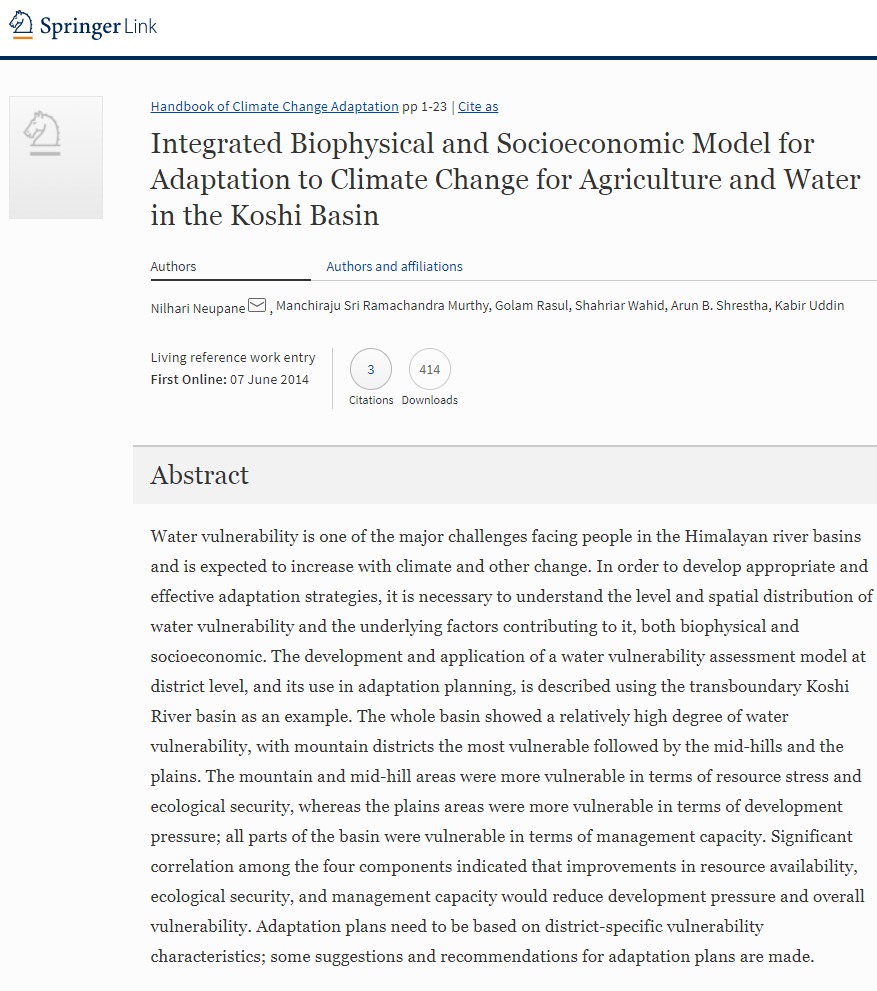
Water vulnerability is one of the major challenges facing people in the Himalayan river basins and is expected to increase with climate and other change. In order to develop appropriate and effective adaptation strategies, it is necessary to understand the level and spatial distribution of water vulnerability and the underlying factors contributing to it, both biophysical and socioeconomic. The development and application of a water vulnerability assessment model at district level, and its use in adaptation planning, is described using the transboundary Koshi River basin as an example. The whole basin showed a relatively high degree of water vulnerability, with mountain districts the most vulnerable followed by the mid-hills and the plains. The mountain and mid-hill areas were more vulnerable in terms of resource stress and ecological security, whereas the plains areas were more vulnerable in terms of development pressure; all parts of the basin were vulnerable in terms of management capacity. Significant correlation among the four components indicated that improvements in resource availability, ecological security, and management capacity would reduce development pressure and overall vulnerability. Adaptation plans need to be based on district-specific vulnerability characteristics; some suggestions and recommendations for adaptation plans are made.